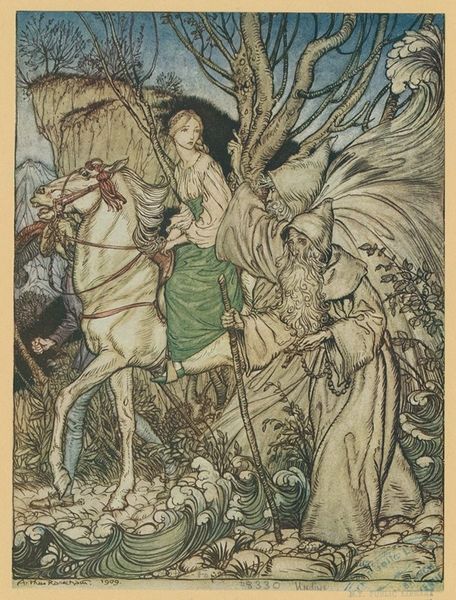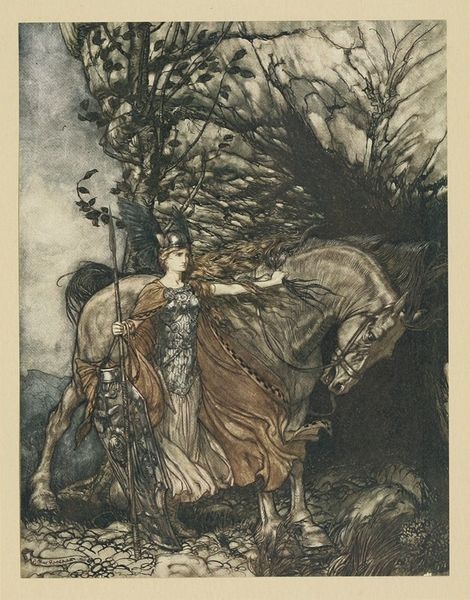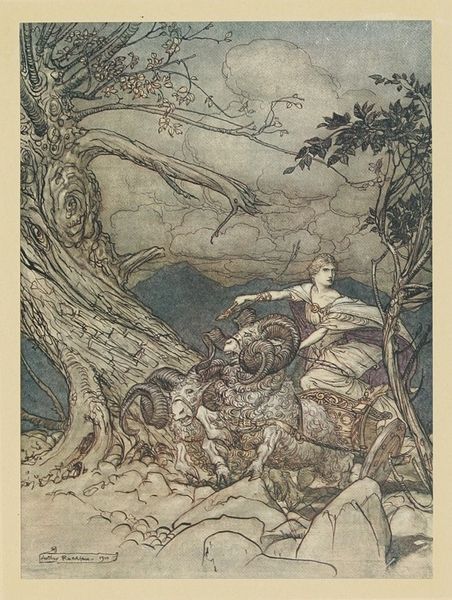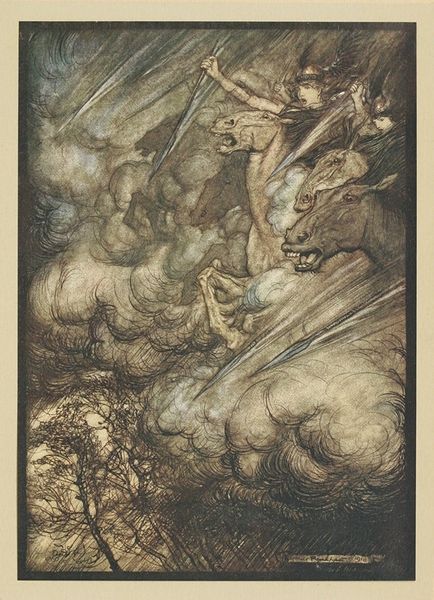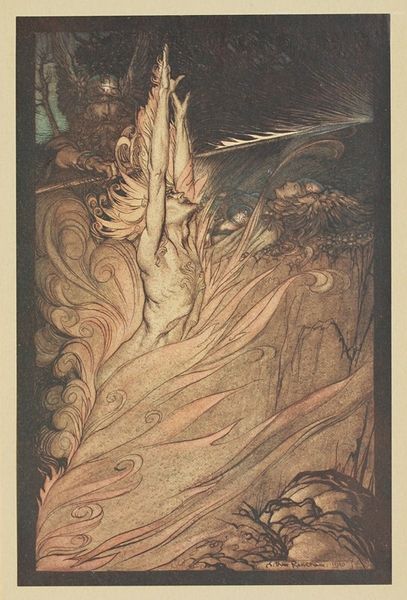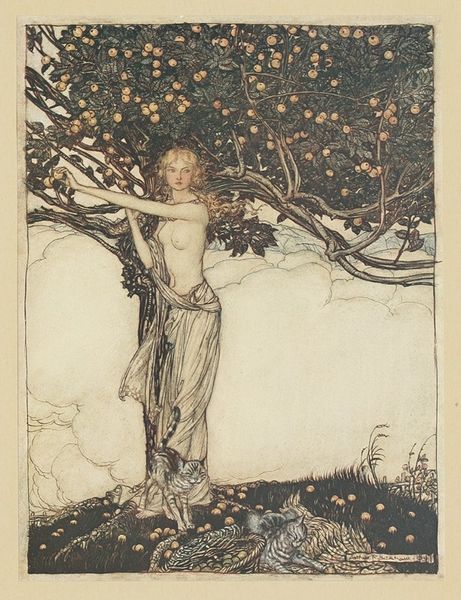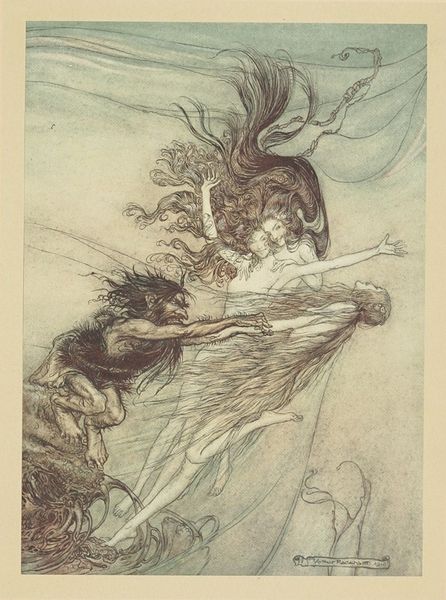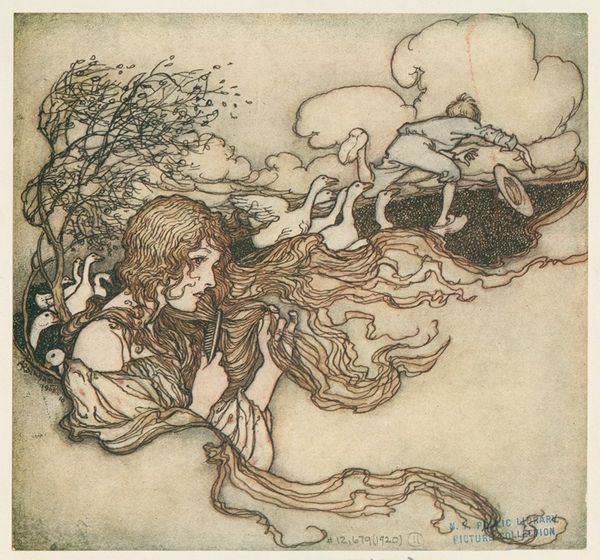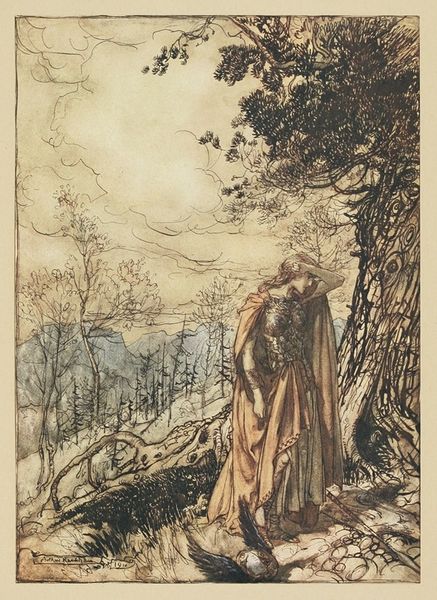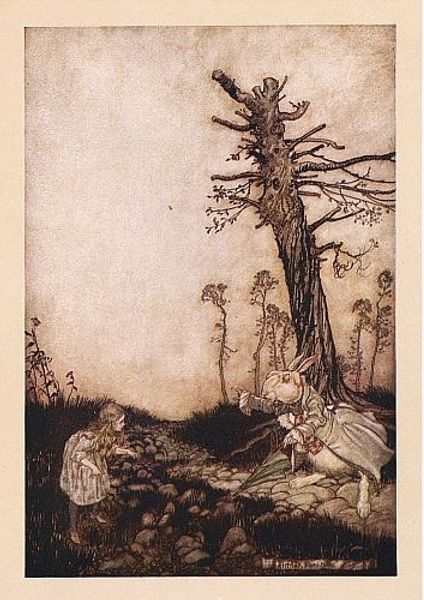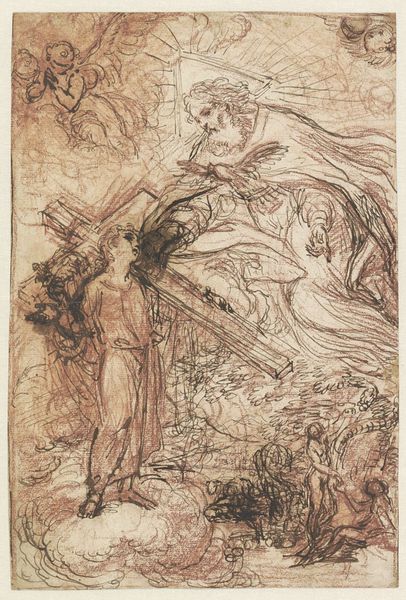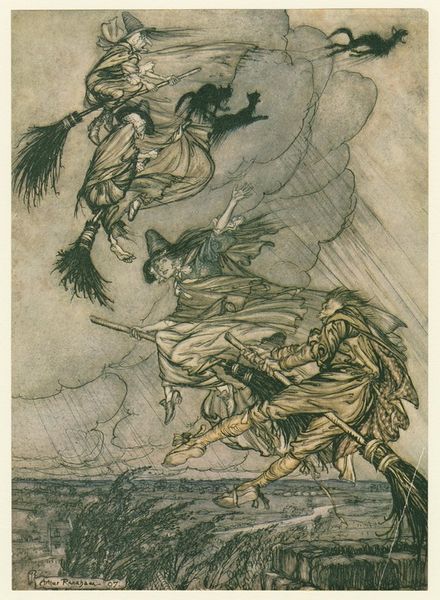
‘And now they never meet in grove or green,’ from act 2, scene 1 of A Midsummer Night’s Dream by William Shakespeare 1908
0:00
0:00
Copyright: Public Domain: Artvee
Curator: Arthur Rackham created this watercolor illustration in 1908, taking inspiration from a line in Shakespeare's "A Midsummer Night's Dream": ‘And now they never meet in grove or green.’ The scene is charged with the tension of Oberon and Titania's quarrel. Editor: What strikes me first is how vividly Rackham renders the wind. You can practically feel it whipping through the tall grasses, and tousling the figures’ clothing and hair. It conveys an intense atmosphere, a moment of palpable unrest and heightened emotional energy. Curator: It’s fascinating how Rackham combines watercolor with pen and ink to achieve such detail. Look closely, and you will appreciate his attention to the material world – the texture of the leaves, the folds of the garments, and the very ground the figures walk on. You see his expert handling of line to give form, enhanced by watercolour washes to set the tone. Editor: The choice of symbolism here is quite masterful. Note the stark contrast between Oberon and Titania and how it mirrors the discord within nature itself. Consider how Rackham portrays Titania surrounded by a cluster of diminutive figures—spirits or fairies, perhaps—while Oberon stands relatively alone, exuding an aura of authority and conflict. Curator: Yes, and how those smaller figures indicate a complex process, perhaps including assistants working to fulfil commissions that involved an industry in book illustration and publishing at the time. We need to keep in mind that this work isn’t divorced from labor and a network of distribution. Editor: Indeed. Beyond that context, consider how the natural elements reflect the psychological states of the characters. The wild storm embodies the intensity of their emotions and how Rackham uses such imagery to underscore how conflict between powerful figures throws the entire world out of balance. Curator: In contrast, note the controlled lines delineating the figures’ costumes. I am led to believe this contrast mirrors the production itself—laborious processes constrained by market considerations versus more expressionistic touches. Editor: Precisely. Looking at the finished work, Rackham succeeds in encapsulating Shakespeare's exploration of human, or perhaps fairy, nature, revealing emotional power dynamics. His strategic use of visual elements conveys both the turmoil and inherent magic within the play. Curator: Indeed. He's managed to showcase an insightful snapshot from Shakespeare using processes that have meaning within themselves, revealing wider artistic processes and social themes of early twentieth century art production. Editor: An image worth meditating on to be sure.
Comments
No comments
Be the first to comment and join the conversation on the ultimate creative platform.
